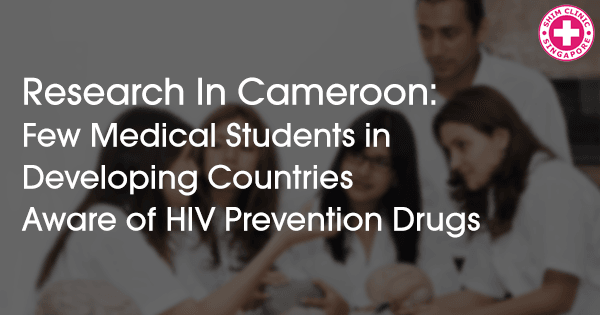A study that was recently published in the BMC Public Health journal has revealed that most medical students in developing countries lack adequate knowledge on post-exposure prophylaxis (PEP) for HIV. PEP therapy among health care providers at STD clinics and hospitals who are at risk of acquiring HIV through needle stick injuries is very crucial for HIV prevention.
The study assessed the knowledge of clinical medical students on PEP and their practices in response to occupational exposure to HIV. The research was conducted in November 2014 and involved 154 clinical medical students who were 4th-6th year undergraduates at the Faculty of Health Sciences University of Buea, Cameroon. The study found out that out of the 154 students 89% had heard about PEP for HIV but only 10 (6.5%) had had previous training on PEP, most of these were senior level students. 54 students (35.1%) knew the appropriate duration of PEP and of the 81 (52.6%) who had reported occupational exposure to HIV in the past, only 4 (4.9%) received PEP.
Understanding of Post Exposure Prophylaxis (PEP) Drugs and Usage
When asked to name anti-retroviral drugs which could be used for PEP, a few mentioned Zidovudine which is used in regions with limited ARVs. However, most of them seemed unaware of the current recommendations from WHO guidelines updated in December 2014 that do not include Zidovudine as firstline PEP drug. Again, more than half of the students were unaware of the appropriate time for starting the PEP therapy. This was important piece of information to acquire because efficiency of PEP increases if received within 24 hours of exposure. When asked how long the PEP therapy should last, only 35.1% of the medical students knew the correct duration is 28 days.
Fortunately, the students were aware that they were at risk of acquiring occupational HIV in hospital settings. Half the students actually admitted to having been exposed in the past. Unfortunately, despite the high exposure rate observed, only a few of the participants reported to having received PEP. The study found out that reasons for not taking PEP after exposure by the students included lack of awareness of the need to take PEP, lack of awareness of hospital procedures on PEP and not believing that they could be infected with HIV.
High-Risk Body Fluids
Another area that the study focused on was the knowledge the students had in identifying high risk bodily fluids for HIV transmission. The study found that less than a quarter of the medical students involved in the study could identify the high-risk bodily fluids. When compared to other studies among dental students and surgical and anesthetic residents, most of them incorrectly reported saliva to be a high-risk bodily fluid.
Recommendations
The researchers recommended the introduction and strengthening of training modules on workplace safety, organizing continuous medical education programs to increase awareness of PEP and provision and uptake of PEP for HIV among health care providers. These provisions will ensure that the health care workforce is continually protected against the risk of acquiring HIV in the course of their work mainly due to needle stick injuries.
Information about the availability of PEP and how it works is very vital to all health care providers. It is important that they this information is made available to all students so that when they join the workforce they are already aware of what to do in case of any exposure to needle stick injuries.
To read the research paper “Awareness and low uptake of post exposure prophylaxis for HIV among clinical medical students in a high endemicity setting” go here: http://www.biomedcentral.com/1471-2458/15/1104

